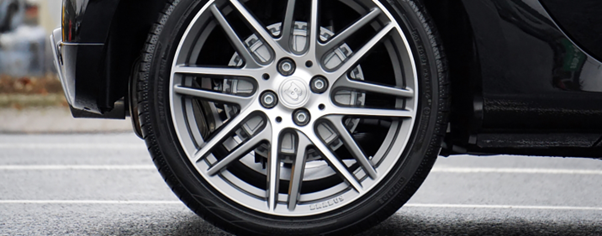Do low-rolling resistance tires improve fuel efficiency?

When it comes to buying tires for your car, you should factor in a lot of considerations. Is the grip good? Will it perform well under all weather conditions? How long will it last? And how much is it? This is probably what your train of thought looks like when it’s time to replace your car tires. But have you ever considered the rolling resistance of the tires you’re trying to buy? You should, and here is why.
What are low-rolling resistance tires?
Low-rolling resistance tires are specially designed to minimize the amount of energy needed to move a vehicle forward. This is possible through the use of specific rubber compounds, construction methods, and tread designs that decrease the amount of friction between the tire and the road surface. As a result, less energy is lost as heat and fuel efficiency is enhanced.
What are the benefits of using low-rolling resistance tires?
Improved Fuel Efficiency
By reducing the energy required to move a vehicle forward, these tires can help drivers save money on gas. In fact, studies have shown that switching to low-rolling resistance tires can improve fuel efficiency by up to 5%, depending on driving conditions and vehicle type. This may not seem like a lot, but over time, it can add up to significant savings at the pump.
To put this into perspective, imagine you drive 15,000 miles per year and get an average of 25 miles per gallon (mpg). If you switch to low-rolling-resistance tires and improve your fuel efficiency by just 2%, you could save around 15 gallons of gas per year.
Reduced Environmental Impact
Another benefit of low-rolling resistance tires is that they can help reduce your impact on the environment. By improving fuel efficiency, these tires can help reduce the amount of greenhouse gas emissions that are released into the atmosphere. This is because less fuel is burned, which means fewer emissions are produced.
Longer Tire Life
In addition to improving fuel efficiency and reducing environmental impact, low-rolling resistance tires can also last longer than traditional tires. This is because they are made with specialized rubber compounds and construction techniques that help reduce wear and tear. As a result, these tires can provide better tread life, which means you may not need to replace them as often.
Of course, the actual lifespan of your tires will depend on several factors, including driving habits, road conditions, and maintenance. However, many drivers have reported that they were able to get more mileage out of their low-rolling resistance tires than their previous set of tires.
What to Consider When Choosing Low-Rolling Resistance Tires
While low-rolling resistance tires offer several benefits, it's important to consider a few factors before making a purchase. For example, these tires may have reduced traction on wet or slippery surfaces, which can affect your ability to stop or maneuver in certain conditions. They may also have a slightly firmer ride, which could be noticeable to some drivers.
To ensure you're getting the right tires for your vehicle and driving needs, it's important to do your research and talk to a qualified tire professional. They can help you choose the best low-rolling resistance tires for your specific situation.